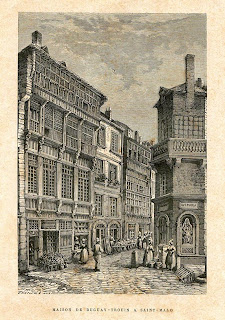This gate was built in 1714 as part of the works involved in the town’s second expansion. It replaced an old postern-gate called the Poterne de Brevet, which was once the southern exit from the town.
It was also called the Porte de la Marine (Navy Gate) because the French Navy had its offices on the ground floor of the building to the left of the gate (1 Rue Saint-Philippe). The famous corsair Robert Surcouf (Saint-Malo 1773 - 1827) lived there following his marriage in 1801.
The Porte de Dinan leads to the wharf of the same name. It was called this because boats very frequently used to sail down the Rance River from Dinan in order to supply Saint-Malo with fresh provisions. In 1838, it was extended as far as the Saint-Louis and Saint-Philippe bastions.
The Môle des Noires is connected to the latter bastion, and this breakwater is named after the rocks called the Roches Noires which it was built on. Construction of this mole began in 1837, it was extended to a length of 520 metres in 1933, and it was rebuilt after 1944.
In-between the wharfs and Saint-Servan which, since 1967, has been part of the town of Saint-Malo, there is a lock which enables ships to gain access to various docks, the dry-dock for repair work, and the Le Naye ferry terminal.
A road now links the old walled town of Saint-Malo directly to Saint-Servan.




